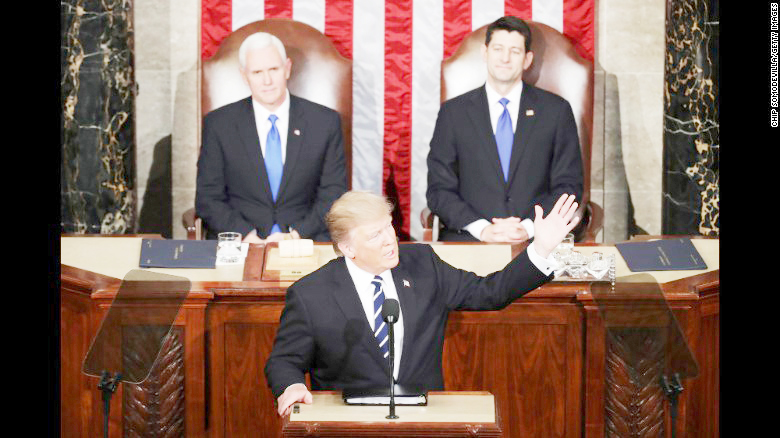The United States is not only the world’s biggest single national economy, it is the single largest export market for a fifth of the world’s countries. That’s why it has remained the world’s largest consumer of foreign goods. However, Trump thinks bad deals. For example, the North American Free-Trade Agreement (NAFTA) and China’s accession to the World Trade Organisation (WTO), have destroyed American jobs and created American losers. “We’ve lost more than one-fourth of our manufacturing jobs since NAFTA was approved, and we’ve lost 60,000 factories since China joined the World Trade Organisation in 2001. Our trade deficit in goods with the world last year was nearly $800 billion,” highlighted US president Trump in his first address to Congress Last Tuesday. Trump has frequently argued that the U.S. is getting destroyed by other countries on trade and threatened to raise certain tariffs on China and Mexico up to 35%.
Whether trade deficits are good or bad, trade deals are best seen as a way of raising trade flows in both directions, rather than an instrument for turning deficits into surpluses. Targeting a bilateral deficit using bilateral tariffs is “a terrible idea”, says Douglas Irwin, author of ‘Free Trade under Fire’.
For example, President Trump has put the North American Free Trade Agreement — NAFTA — on notice. Canada and Mexico are annoyed to renegotiate the agreement, which could be disastrous for their economy. Mexico exported $316.4bn of goods and services to the US in 2015, according to US government figures. According to Chad Bown, a senior fellow at the Peterson Institute for International Economics in Washington, if The United States withdrew from NAFTA, other trade agreements could kick in. Because the NAFTA countries are all WTO members, at worst each must apply the import tariffs they offer to all other WTO countries. Therefore, Trade Commissioner Cecilia Malmstrom, and the minister of economy of Mexico, Ildefonso Guajardo said in a statement within their meeting last February, the European Union and Mexico speed up negotiations to seal a free trade pact. The move has been triggered by a “worrying rise of protectionism around the world”. Trade between the EU and Mexico more than doubled to €53bn from €26bn between 2005 and 2015, according to the European Commission.European leaders have also said Brussels should take advantage of a more protectionist US leader, who has already withdrawn from the Trans-Pacific Partnership trade deal. That is to step up negotiations with would-be partners, especially African countries. The High Representative of EU Federica Mogherin said in a press conference last month, “We expect to leverage €44 billion for investments in Africa by 2020. Sometimes I hear about the need for a Marshall Plan, maybe this is a European plan, but the magnitude is quite relevant.” Furthermore, China’s ambitious global trading strategy known as the “New Maritime Silk Road,” or “One Belt, One Road” (OBOR), is now coming to life, particularly in parts of East Africa where major infrastructure and defence projects are being built. New ports in Tanzania, rail lines in Kenya, naval facilities in Djibouti, and industrial zones along the Suez Canal in Egypt are all intended to support this massive new trade network.
Trump’s win will lead to increased barriers to international trade, reducing growth opportunities in emerging economies; however, “weak link” markets such as Egypt and Kuwait can improve their economic performance, according to a report by EFG Hermes. Although the Suez Canal saw a 3.3% decline in its total revenues in 2016 compared with 2015, according to CAMPS; the new global trade network between NAFTA, EU, China and African countries would be an opportunity for amounting its revenues up to US 13 billion and 226 million EGP by 2023. It would contribute Egypt’s GDP to hit EGP 6 trillion by 2021, increasing by 6%, according to the recent IMF’s report: World Economic Outlook.


